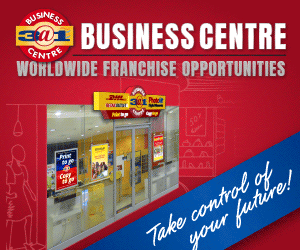South Africans looking for economic respite need to tighten their belts for a little bit longer. Lesetja Kganyago, the Reserve Bank governor, announced another hike to the repurchase (repo) rate on the 30th of March. The South African Reserve Bank Monetary Policy Committee (MPC) has taken the decision to increase the hike the repo rate by 50 basis points, bringing the repo rate to a 13 year high of 7.75%, with the prime lending rate set at 11.25%. This is higher than the predicted 25 basis points hike and means even more pain for an overburdened SME sector.
This is the eighth consecutive increase since the start of 2022, with South Africans seeing the repo rate rise from 3.75% at the start of January 2022 to its current level.
After the repo rate was hiked in January 2023, economists were cautiously optimistic that the end of the current “up cycle” had been reached and no further increases would be necessary. However, after Statistics SA reported consumer inflation unexpectedly rose to 7.00% in February, up from 6.9% in January 2023, a cautious MPC had no choice but to announce another hike in an attempt to halt further inflation. The increase in inflation from January to February is the first time since October that consumer inflation increased, with the main contributors being a rise in food prices, further exacerbated by energy and transportation costs, like fuel. For Business Owners, this means their customers have far less disposable income available for goods and services over and above the monthly essentials like groceries and transport.
Another hike, then a decrease?
Economist Dawie Roodt believes this announcement will likely not be the final interest rate increase before we see a respite, and that South Africans can expect another hike in two months’ time. “Depending on what happens with inflation, the last increase in this cycle should be in a couple of months’ time. With a bit of luck, we could see the Reserve Bank deciding to cut interest rates by the second half of this year. This will depend on, for example, the exchange rate of the currency and the international oil price,” Roodt notes.
But while a cut in repo rate could be on the cards in the future, the impact of the current hike on SMEs is concerning. Miguel Da Silva, Managing Executive of Retail Capital, a division of TymeBank, states, “SMEs have survived a difficult year and the latest rate hike will mean there is even less money in the pockets of their already indebted customers particularly those servicing expensive debts like home loans. Small business owners will once again be challenged to navigate another financial hurdle. South African SMEs are among the most innovative in the world and will no doubt find ways to survive and even position their business for long-term success, but now is the time for Business and Government to up the ante, by creating more impactful incentives like the current Energy Relief Package.”
SMEs can rise to the challenge
According to Da Silva, the key for small business success is for owners to be as proactive as possible in managing the impact of this latest repo rate hike. He offers solutions and advice to overcome the potentially negative effects of this on SMEs and their growth.
- Minimising the impact on profits
With an increase in the rate at which the Reserve Bank lends money to commercial banks, this hike will be passed on to clients, which means an increase in new borrowing costs and the costs of existing debt for SMEs. For small businesses dependent on any type of financing, whether this be for the working capital, ensuring cashflow or the expansion of the company, a higher interest rate means lower profits.
“If possible, SMEs must focus on the repayment of loans as a matter of urgency, and this includes credit card debt. There are very few business costs that match the cost of interest of a loan, and obviously this will be compounded by the higher interest rate,” states Da Silva.
“While trimming expenses can help to keep a business in the black, so too can diversifying revenue streams. It is not easy when businesses are just trying to keep the lights on, but putting some time aside to think about new opportunities can be key to finding new ways to increase revenue. A small adjustment in scope, can lead to big rewards” he says.
- Revising operating costs
Business owners under pressure from an operating cost perspective now walk a fine line: increase the price of their goods and services to accommodate higher operating expenditure and risk losing customers or take a hit by keeping costs stable and risk eroding profits.
“SMEs must be savvy when it comes to calculating retail price, a strategy of raising the cost of high-ticket items, but keeping the bread-and-butter items relatively stable can help customer retention and offset wholesale increases,” Da Silva advises. “Also, it is important to decide if your current product range can be refined to cut expenses. Doing so will contribute directly to the bottom line.”
- Rethinking business expansion
The increase of the repo rate has a direct impact on the opportunity for business growth, many SMEs put their expansion plans on hold due to the rise in the cost of borrowing. For small businesses, a halt to their ability to hire new employees, acquire new equipment or to invest in new projects will need a change in growth strategy. A reduction in business expansion in the economy has a knock-on effect further down the line because lack of growth from business, means a lack of growth for the economy as a whole.
“The decision to expand your business under the current circumstances can be a difficult one. Paradoxically, great opportunities often present themselves in times of economic difficulties. Business owners need to ask if there are ways to expand the business without committing to an expensive loan. Also, it will help to figure out what business decisions can be made now which will pay off once the interest rate is eventually lowered and a loan is more affordable,” Da Silva states.
All investments have not been created equally and with current rebates and incentives some short-term investments can directly impact the business profits in the medium to long term.
- Ensuring the economy stays afloat
Another unfortunate outcome of higher interest rates is an increase in defaults on existing financial arrangements by SMEs struggling to keep up with payments. This could lead to a rise in non-performing assets for banks, which in turn have a negative impact on the health of the entire financial sector. Taking SMEs’ inability to service loans to the extreme, certain businesses could be forced to close their doors. With the official South African unemployment rate standing at 32.7% (Q4, 2022), this could herald further job losses that the economy can ill afford.
“If your company is struggling, speak to your financiers about arrangements immediately. Do not wait until the situation is untenable and they are forced to act. Lenders do not want businesses to default, so if there is a way to help, institutions can often find a way”, Da Silva advises.
Moving forward
Da Silva points out that SMEs have managed to survive similar increases over the past year, and although it has not been easy, many have persevered and even grown. “A resilient SME sector able to adjust to outside pressure is key to the growth of South Africa and shows why this sector is the backbone of the economy,” he states.
“Everyone is counting on SMEs to do what they do best – to be tenacious and find innovative solutions to keep their businesses alive and contribute to the local economy. SMEs need all the support they can get, with government and business working together to assist in every way possible. Even with the rises in interest rates, opportunities for growth will present themselves. It’s easier said than done, but with the right mindset, opportunity is out there to be capitalised on”, Da Silva concludes.










